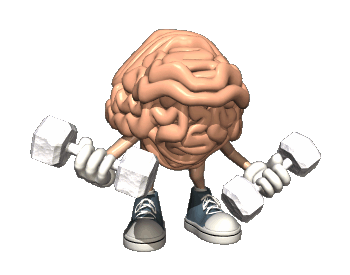Why Cognitive Gym?

Why Cognitive Gym? CF2 in Action
Why “cognitive”? What is cognition”? The meaning of “Cognitive” in the CF2 is deliberately broader than strictly defined in the specialist cognitive literature (information processing behind human action from sensing to deciding and executing action).
The logic is not new, it reflects our growing knowledge about information processing behind all behaviour and mental operations, as is the case with the neural mechanisms. The RDoC represents broad domains of cognitive functioning but only one of its 5 broad domains is labelled “cognitive”. So it’s the same as when we discuss the neuro-cognitive mechanisms of emotional regulation (or dysregulation). When our fear screws up our decisions, but it is also a two-way traffic – say, when cognitive reframing helps shape affective responses.
The 3 pillars of the performance mindset – staying calm, focused and flexible when faced with challenges and adversity – correspond to three distinct skill sets that sport and performance psychologists have worked with for decades:
. Stress Management skills to cultivate Calm
. Attention Control skills to stay Focused
. Mental Agility to be Flexible and adapt to change
These skills are underpinned by primary cognitive capacities (cognitive primaries) such as self-awareness, memory updating, task switching, impulse control (inhibition), and cognitive flexibility that can now be linked to neuroscience-informed assessment and interventions. Similar to the power, speed, flexibility and endurance elements of general (physical) fitness, these cognitive primaries support the development of all skills, from reading, remembering and problem solving to job-specific technical skills, as well as more complex fitness attributes such as frustration tolerance and resistance to distraction.
Similar to physical power and endurance, cognitive fitness can be improved with deliberate practice. A systematic collection of cognitive practice routines is being developed under the construct of Cognitive Gym (Aidman, 2017; 2020, Temby et al., 2015). They include modifications of well-known practices (e.g., controlled breathing and imagery) as well as high-tech applications such as bio/neuro-feedback and brain stimulation[2].
Developing cognitive fitness requires long-term investment of time and deliberate practice (Zaichkowsky & Peterson, 2018). Reliable, evidence-based measurement of these attributes is critical to optimising this investment by tracking the progress of its outcomes and informing decisions about any changes/adjustments to it. The CFF (Aidman, 2017, 2020) offers a systematic approach to the assessment and improvement of these attributes. CFF was introduced as a unifying conceptual toolkit for psychologists working in performance-focused applications such as sport and exercise, performing arts, military and law enforcement, acute medicine, paramedic and emergency response domains.
The CFF aims to bring together the mental health professions focussed on psychological deficit and disfunction, and the human performance field concerned with improving (psychological) functioning of healthy individuals. CFF builds on the concepts of mental fitness (MF; Seligman, 2008) aimed at promoting a positive and proactive notion of mental health (Robinson et al., 2015), and military cognitive readiness (CR; Grier, 2012) reflecting a broad set of performance predictors, from trainable skills to dynamic functional states and trait-like characteristics ranging from cognitive ability to attentional styles (Crameri et al., 2019).
By integrating CR and MF with the growing consensus on key domains of cognitive functioning (RDoC; Morris & Cuthbert, 2012; Yücel et al., 2019), the CFF enables neuroscience evidence to inform high performance applications. Note that Calm, Focused and Flexible can pack into the same CFF acronym. If it causes confusion, the framework can be called CF2 – as it was first published (Aidman, 2017, 2020).
On the other hand, it might help to remember that CFF stands for staying Calm, Focused and Flexible, as well as for the Cognitive Fitness Framework – a toolkit for deliberate practice of these, and many more useful attributes contributing both to your performance and wellbeing.
[1] Morris, S. E., and Cuthbert, B. N. (2012). Research domain criteria (RDoC): cognitive systems, neural circuits and dimensions of behavior. Dialogues Clin. Neurosci. 14, 29–37.
[2] It’s worth noting here that Enhancement is not same Augmentation, and it is no longer limited to “natural” methods of enhancing ourselves through learning a new skill or using the tools such as a hammer or binoculars. We can augment our sensing with radars and NVGs and enhance it through visual acuity training or corrective eye surgery (as Tiger Woods did, wonder what the WADA had to say about that one). We can enhance our thinking through education or training and augment it through decision support tools for tactical decisions, and expert consensus building techniques, like the Delphi, for more strategic tasks. We can enhance our action capacity through strength and conditioning, and augment it with exoskeletons, robotic mules or compression garments. We can enhance our functional state through nutrition, work-rest hygiene or mental skills training and augment it with caffeine and other fatigue countermeasures. The end result is the same – enhanced performance. In the field of cognitive enhancement the distinction is typically between cognitive fitness and the tools that can amplify its impact on your performance.